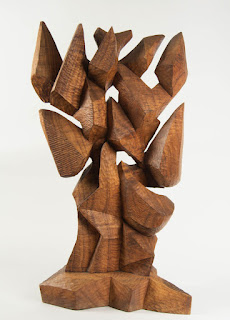In all five professions you do not have a great deal of choice but to trust them to one extent or another. As for curators you need to be seduced by their museum, collection or exhibitions. Once you are, you probably begin to trust them even without meeting them.
I wonder how many people actually know what a Museum Curator does unless they start to collect or go regularly to museums and exhibitions and begin to wonder how did all this art get here and why. Like General Practitioners who must have a wide range of knowledge to make a diagnosis, the curator must have a broad knowledge of art history to understand the area that they wish to work in and how it interacts with its historical context. Like the librarian the curator must be good at research and organization in order to catalog collections or put together an exhibition.
While nurses and doctors are concerned with the well-being of their patients, curators care about the works of art in their collection. There is no other reason to go into their line of work. … it is not the pay. The most important part of their work is to create the understanding necessary for art to be preserved. They do research to gather information about the objects in their collections and work with conservators on their physical preservation. But also, just like the librarian leads you in the right direction to the section or book you are looking for, they make the art understandable giving it context for the public through their installations and publications.
Part of a curator’s job is to teach, so they will explain to an individual or a group why the art is situated where it is. Art seeks context, but put a Houdon of Benjamin Franklin in the Metropolitan Museum, next to a Jeff Koons of a Rabbit that brought 91.1 million at auction and an abstract sculpture by Cecil Cartensen in the Kansas City Public Library and without explanation you would probably feel it is a chaotic mess and never visit that exhibition gallery or museum again.
If, however, the curator wanted to do an exhibition of the ideal male figure and placed a Giacometti of “Walking Man (1960) in the Fondation Giacometti, next to a marble Roman copy (1st century AD) of the bronze Discus-thrower of Myron Sculpture (460-450 BC) in the Palazzo Lancellotti in Rome, next to Michelangelo’s David (1501-1504) in the Gallerian dell’Academia in Florence it might be a show that will intrigue you by the comparison without any explanation. If this were to be put into further context by the curator explaining her choices, you would enjoy the exhibition all the more. You might even wish to look deeper into other sculpture of these periods. (Images Walking Man, Discus-thrower, Michelangelo’s David)
Personally, I want an exhibition to speak to me without explanation first, but like all the arts the more you know and understand the more you can enjoy and get out of the presentation. Curators explain works in labels, didactic panels, audio guides and interactive videos, but if you have the chance of a visit with the curator as guide that makes it all the more enlightening.
It is an interesting subject to mull over and think why we might trust people that we may have never met before.







No comments:
Post a Comment